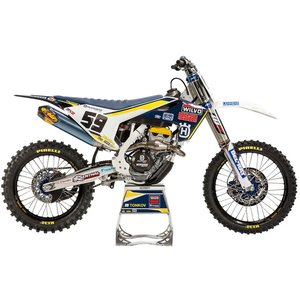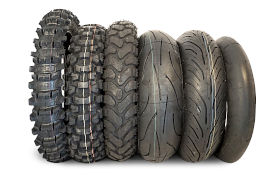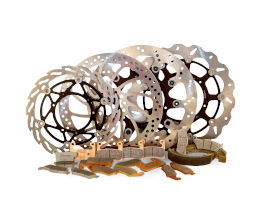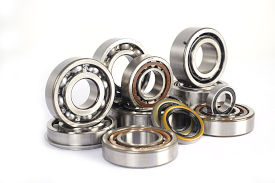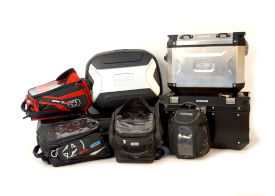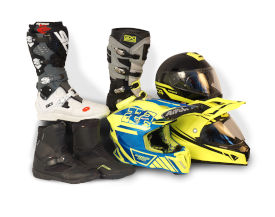Husqvarna FC 250 [2021-2022]: A Motocross Refinement Worth Riding
Introduction
The Husqvarna FC 250 represents the pinnacle of European motocross engineering for the 250cc class. Designed for riders who demand precision, agility, and relentless performance, this machine bridges the gap between raw power and finesse. Having spent time aboard this Swedish-Austrian marvel, it’s clear why it’s a favorite among competitive riders and weekend warriors alike. Let’s dissect what makes this generation of the FC 250 stand out in the dirt bike arena.
Engine Performance: Precision in Power Delivery
At the heart of the FC 250 lies a 249.9cc liquid-cooled single-cylinder engine, producing 46 HP (33.6 kW). This isn’t just about numbers—it’s about how the power is delivered. The Keihin electronic fuel injection (EFI) system ensures crisp throttle response, whether you’re feathering through tight corners or pinning it out of a berm.
The engine’s bore and stroke—78.0 x 52.3 mm (3.1 x 2.1 inches)—favor high-revving performance, typical of motocross-focused machines. What stands out is the linear power curve. Unlike some competitors that hit hard in the mid-range, the FC 250 builds power progressively, allowing riders to maintain control even when traction is scarce. The 5-speed gearbox shifts seamlessly, though you’ll rarely need fifth gear on most tracks.
The electric starter (a luxury in this segment) and lithium-ion battery ensure reliability at the gate. No frantic kicking—just push a button and go.
Chassis and Handling: Dance Partner in the Dirt
The 25CrMo4 steel double-cradle frame is the backbone of the FC 250’s agility. It’s stiff enough to handle hard landings but flexes subtly to absorb chatter and maintain tire contact. Paired with WP XACT suspension—48mm USD forks up front and a linkage-mounted monoshock—the bike floats over braking bumps and square-edged ruts.
Both front and rear suspension offer 300 mm (11.8 inches) of travel, tuned for a balance between plushness and bottoming resistance. Out of the box, the setup favors intermediate-to-expert riders, but adjustable compression and rebound damping let you tweak it for softer or harder terrain.
The Brembo braking system is another highlight. The twin-piston front caliper bites a 220 mm (8.7-inch) rotor with confidence-inspiring power, while the single-piston rear brake offers just enough modulation to slide the rear tire predictably.
Ergonomics: Built for Attack
At 940 mm (37 inches), the seat height is typical for a full-size MX bike, but Husqvarna’s slim bodywork makes it feel manageable. The handlebars are positioned for an aggressive riding stance, encouraging you to weight the front wheel in corners.
The 99.5 kg (219.4 lb) dry weight feels even lighter when moving, thanks to centralized mass from the compact engine and under-seat fuel tank. You can flick the FC 250 sideways mid-air or pivot on the pegs without fighting inertia.
Fuel capacity is 7 liters (1.85 gallons), enough for 30-45 minutes of hard riding—typical for motocross but something to note for longer hauls.
Competition: How It Stacks Up
KTM 250 SX-F
The FC 250’s closest rival is its Austrian cousin, the KTM 250 SX-F. Both share engines and similar chassis geometry, but the Husqvarna differentiates itself with a slightly smoother power delivery and WP suspension that’s marginally plusher on choppy terrain. Brembo vs. Magura components? It’s a toss-up—both perform flawlessly.
Yamaha YZ250F
Yamaha’s YZ250F counters with a reputation for bulletproof reliability and a torquier engine. The Yamaha feels heavier in motion, though, and its KYB suspension lacks the WP XACT’s adjustability range. For technical tracks, the FC 250’s agility shines.
Kawasaki KX250
The KX250’s Showa suspension is plush, but its engine character is more abrupt. Riders who prefer a "hit" in the mid-range might favor the Kawasaki, but the Husqvarna’s linear delivery rewards precision.
Maintenance: Keeping the FC 250 in Fighting Shape
Oil Changes Are Critical
The FC 250’s high-strung engine demands frequent oil changes. Husqvarna recommends every 10-15 hours of ride time. Use a high-quality synthetic oil (10W-50 grade) to protect the DOHC valvetrain. Pro tip: Replace the oil filter every other change.
Air Filter Care
A clean air filter is non-negotiable for EFI systems. The FC 250’s twin-air filter is accessible under the seat. Clean it with biodegradable solvent after every ride, and oil it lightly to trap fine dust.
Suspension Servicing
WP suspension performs best when serviced regularly. Rebuild the forks and shock every 30-40 hours or after particularly muddy races. Fresh DOT 5.1 brake fluid (same as OEM) prevents spongy lever feel.
Chain and Sprockets
The 520 chain requires consistent tension checks. A loose chain accelerates wear on the sprockets and can snap under load. Lubricate with a non-fling grease after washing.
Cooling System
Use a 50/50 water+coolant mix to prevent corrosion. Check for leaks around the radiator hoses after hard crashes.
Aftermarket Upgrades to Consider
- High-Performance Air Filters: Boost airflow and simplify maintenance with a pre-oiled, reusable filter.
- Sprocket Kits: Adjust gearing for tighter tracks (+1 tooth on the rear) or faster circuits (-1 tooth).
- Brake Pads: Sintered pads offer better bite for aggressive riders.
- Handguards: Protect levers and hands in wooded sections.
Conclusion: A Refined Weapon
The Husqvarna FC 250 [2021-2022] isn’t just a dirt bike—it’s a precision tool for riders who value control over chaos. Its engine rewards smooth inputs, its chassis forgives miscalculations, and its components withstand abuse. While it faces stiff competition, few bikes in the 250cc class blend European refinement with motocross brutality so effectively.
Whether you’re chasing podiums or perfecting your whip, the FC 250 deserves a spot in your garage. And when it’s time to tweak, tune, or rebuild, MOTOPARTS.store has the gear to keep you ahead of the pack.
Specifications sheet
| Engine | |
|---|---|
| Stroke: | Four-stroke |
| Max power: | 34 kW | 46.0 hp |
| Fuel system: | Fuel Injection (Keihin EMS) |
| Max power @: | 13000 rpm |
| Displacement: | 250 ccm |
| Fuel control: | Double Overhead Cams (DOHC) |
| Bore x stroke: | 78.0 x 52.3 mm (3.1 x 2.1 in) |
| Configuration: | Single |
| Cooling system: | Liquid |
| Number of cylinders: | 1 |
| Dimensions | |
|---|---|
| Wheelbase: | 1482 mm (58.3 in) |
| Dry weight: | 100 |
| Seat height: | 940 mm (37.0 in) adjustable |
| Overall length: | 2260 mm (89.0 in) |
| Ground clearance: | 370 mm (14.6 in) |
| Fuel tank capacity: | 7.0 L (1.85 US gal) |
| Drivetrain | |
|---|---|
| Clutch: | Wet multi-disc clutch with Brembo or Magura hydraulics (varies by model year) |
| Chain size: | 520 |
| Final drive: | chain |
| Transmission: | 5-speed |
| Electrical | |
|---|---|
| Battery: | Lithium-ion |
| Starter: | Electric |
| Maintenance | |
|---|---|
| Coolant: | Water+ (specific coolant type) |
| Brake fluid: | DOT 4 or 5.1 |
| Spark plugs: | NGK CR8E or equivalent (check manual for specifics) |
| Chassis and Suspension | |
|---|---|
| Frame: | Central double-cradle-type 25CrMo4 steel |
| Rear tire: | 140/90-18 |
| Front tire: | 90/90-21 |
| Rear brakes: | Single 220 mm disc, Brembo single-piston caliper |
| Front brakes: | Single 220 mm disc, Brembo twin-piston caliper |
| Rear suspension: | WP XACT Monoshock with linkage |
| Front suspension: | WP XACT-USD fork, 48 mm diameter |
| Rear wheel travel: | 300 mm (11.8 in) |
| Front wheel travel: | 300 mm (11.8 in) |



